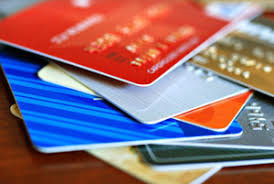AuthorAlex Swire has been in business for over 40 years and has a broad knowledge of business issues and effective approaches to solving them. ArchivesCategories |
Back to Blog
Business health check27/7/2020
0 Comments
Read More
Back to Blog
Credit Cards - the Good and the Bad2/3/2020  There are both advantages and disadvantages to using credit cards. The topic continues to be one of the most debated issues of our time. It seems that the parties are polarized into loving or hating them. When used correctly, they are great and can provide you with everything from free overseas travel and accommodation, to insurance and improved cashflow planning, however when misused, can lead to a bottomless empty feeling and debt. 10 benefits of using credit cards include:
You tend to overspend. If you have ever struggled with credit card debt, it is best to avoid using credit cards completely. I challenge anyone to see if their spending pattern is altered by paying cash only instead using a credit card.
Limit the number of credit cards to 2 – one for business and one personal card. Then you can pay out the full balance each and every month. Track your credit card balance even during the month. Know your personal safe limit – not the credit card limit, but the amount you know you can pay off in full each month. Never carry forward a balance from the previous month. The credit card itself is neither good nor bad. It is always how the user handles the credit card that determines whether the card is good or evil for the individual. So you need to be extremely honest with yourself, and decide which fence you are sitting on. PS: For a free copy of “How to Pay Off Credit Cards” please email me. If this is something you would like to gift to one of your friends or relatives, please email me their details for this free report. PPS: If you would prefer to be personally coached, or know somebody who needs coaching on credit card debt, I am available to guide and teach and help.
Back to Blog
mails are a very important business tool, and simultaneously a constant distraction. The challenge is to keep the business tool in perspective and reduce the distraction. Some people love long detailed emails and others short and to the point.
Whichever style you prefer is correct. American research on emails reveals the following. On average, office workers, owners receive between 120 and 200 emails per day, check the emails 15-30 times per day (the specific number does not really matter) and spend between 2.5 and 2.6 hours per day reading, answering and filing these emails. The research suggests that around 140 of these 200 i.e. 70% are irrelevant to the receiver. Average professional spends 28% of the work day reading and answering emails (McKinsey USA). Time consuming activities include, creating folders, archiving emails into many folders, ... There are 2 extremes generally – one end of the spectrum has nil in the inbox where everything is cleared each day, and at the other extreme where everything is saved and remains in their inbox. How to reduce time spent on emails each day:
The goal is to reduce email time. |
||||||

 RSS Feed
RSS Feed
